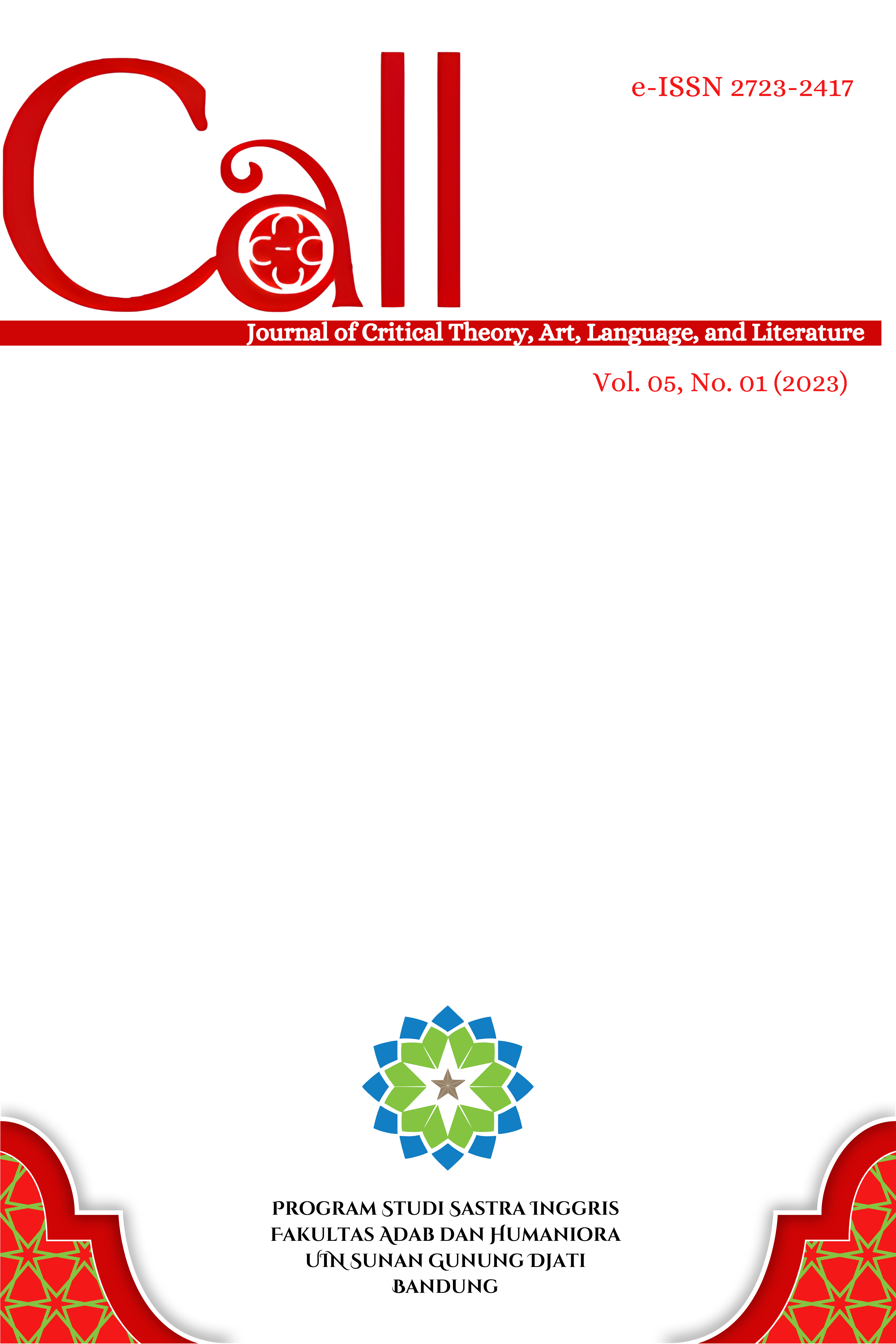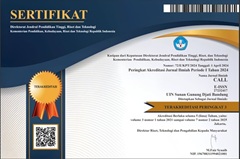REPRESENTAMEN OF MORALITIES ON LANGUAGE AND VISUAL SIGNS IN INCREDIBLES 2 FILM
DOI:
https://doi.org/10.15575/call.v5i1.15397Abstract
Film stands out as a compelling contemporary mass medium that has witnessed substantial growth. This progress has given rise to numerous film genres, intended to captivate audiences across generations, including the realm of animated cinema. Often, films convey messages depicting the dichotomy between good and bad characters in everyday life, typically portraying the vulnerable and kind-hearted individuals facing oppression from self-centered antagonists. However, in fictional works like "Incredibles 2," superheroes emerge as guardians, shielding society from menacing forces. This research aimed to provide a comprehensive elucidation of the interpretive process through the utilization of the triadic model. Furthermore, it endeavors to discern the facets of morality manifested through both linguistic and visual symbols within the semiotic framework of the movie "Incredibles 2." This was about semiotics which refers to Charles Sanders Peirce’s theory. This study used qualitative method as research design. Data in the study were signs appeared in the film. The findings section showed six kinds of sign that the writer founded in the Incredibles 2 film which are sinsign, qualisign, legisign, icon, indexes, and symbol that exists moralities signs. The findings on sign can divided into two parts, Language and Visual sign. Language sign can be utteranced by the speaker on the film from Mr. Incredible and a little boy. Visual sign could be shown by icon and symbol on the things in every capture.
Â
Keywords: semiotic, Pierce, moralities, Incridibles 2
References
Adisusilo, S. (2014). Pembelajaran nilai karakter konstruksi dan vct sebagai inovasi pendekatan pembelajaran afektif. Jakarta: PT Raja Grafindo Persada.
Anggraeni, Y., Soemantri, Y. S., & Indrayani, L. M. (2021). Representation of the Indonesia government in handling covid-19 case on tempo magazine cover. e-Journal of Linguistics, 15(1), 7–15.
Barnham, C. (2019). Qualitative semiotics: Can we research consumer meaning-making? International Journal of Market Research, 61(5), 478–491.
Bignell, J. (2002). Media Semiotics an Introduction: Second Edition . New York: Palgrave.
Decety, J. (2021). Why empathy is not a reliable source of information in moral decision making. Current Directions in Psychological Science, 30(5), 425–430.
Djawad, A. A. (2016). Pesan, tanda, dan makna dalam studi komunikasi. STILISTIKA: Jurnal Bahasa, Sastra, Dan Pengajarannya, 1(1), 95–101.
Ellemers, N., van der Toorn, J., Paunov, Y., & van Leeuwen, T. (2019). The psychology of morality: a review and analysis of empirical studies published from 1940 through 2017. Personality and Social Psychology Review, 23(4), 332–366.
Groppel-Wegener, A. (2018). Raiding the superhero wardrobe: a review of the superhero costume - identity and disguise in fact and fiction. The Comics Grid: Journal of Comics Scholarship, 8(1), 1-8.
Hudi, I. (2017). Pengaruh pengetahuan moral terhadap perilaku moral pada siswa smp negeri kota pekan baru berdasarkan pendidikan orangtua. Jurnal Moral Kemasyarakatan, 2(1), 30-44.
Kachur, I. (2021). The correlation between language and reality. Philological Review, 1(17), 45–51.
Kubrak, T. (2020). Impact of films: changes in young people’s attitudes after watching a movie. Behav Sci (Basel), 10(5), 1-13.
Lamotte, C. (2022). Discovering animation manuals: their place and role in the history of animation. Animation, 17(1), 127–143.
Nurfatwa, I., Alivah, M. N., & Fauziah, U. N. E. (2018). Semiotics analysis logo of stkip siliwangi and ikip siliwangi. Project, 1(5), 532–538.
Spence, C. (2020). Senses of place: architectural design for the multisensory mind. Cognitive Research: Principles and Implications, 5(1), 1–26.
Taylor, S. J., Bogdan, R., & DeVault, M. (2016). Introduction to Qualitative Research Methods: A Guidebook and Resource (4th ed.). Hoboken, NJ: John Wiley & Sons Inc.
Downloads
Published
Issue
Section
Citation Check
License
Authors who publish in CALL agree to the following terms:
- Authors retain copyright and grant the journal right of first publication with the work simultaneously licensed under Attribution-ShareAlike 4.0 International (CC BY-SA 4.0) License that allows others to share the work with an acknowledgment of the work's authorship and initial publication in this journal.
- Authors are able to enter into separate, additional contractual arrangements for the non-exclusive distribution of the journal's published version of the work (e.g., post it to an institutional repository or publish it in a book), with an acknowledgment of its initial publication in this journal.
- Authors are permitted and encouraged to post their work online (e.g., in institutional repositories or on their website) prior to and during the submission process, as it can lead to productive exchanges, as well as earlier and greater citation of published work (See The Effect of Open Access).




